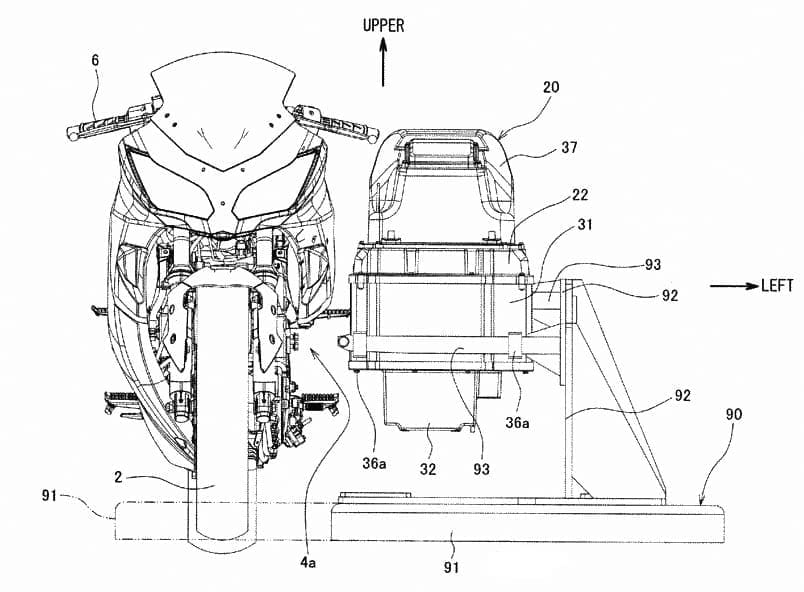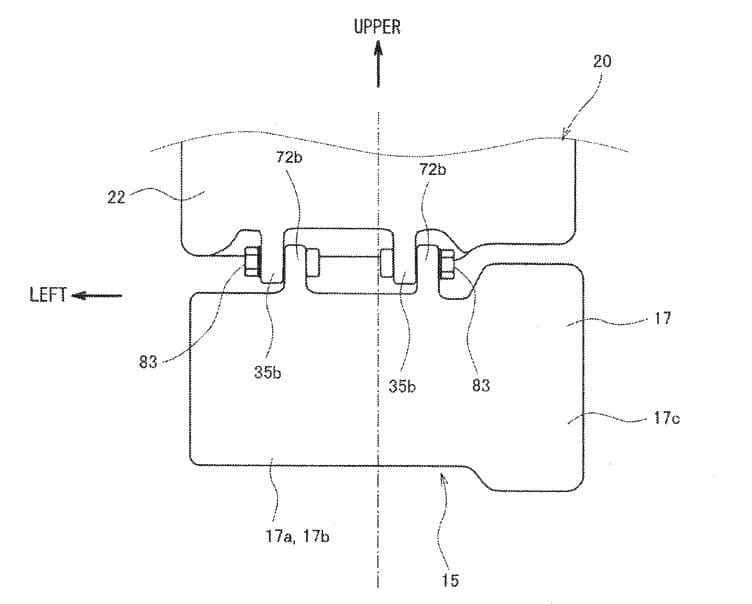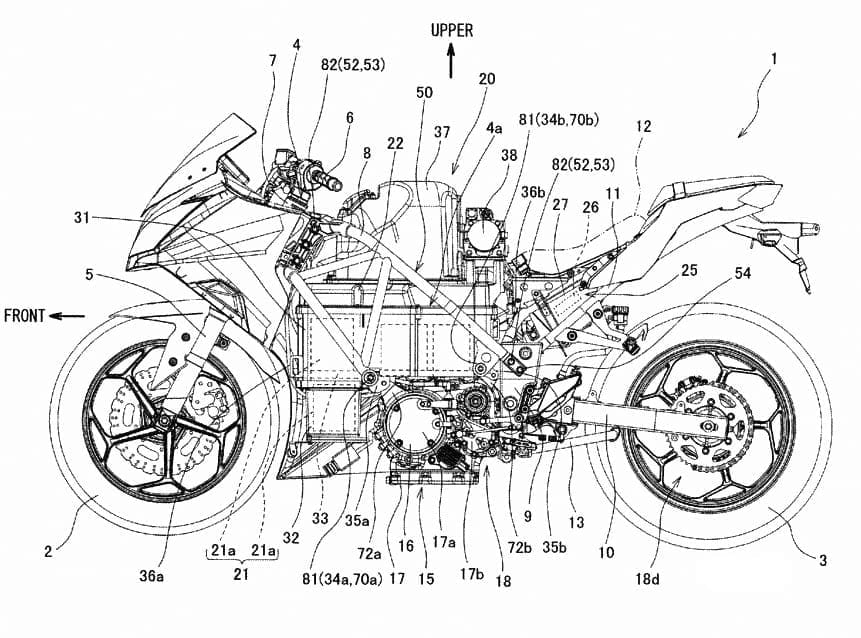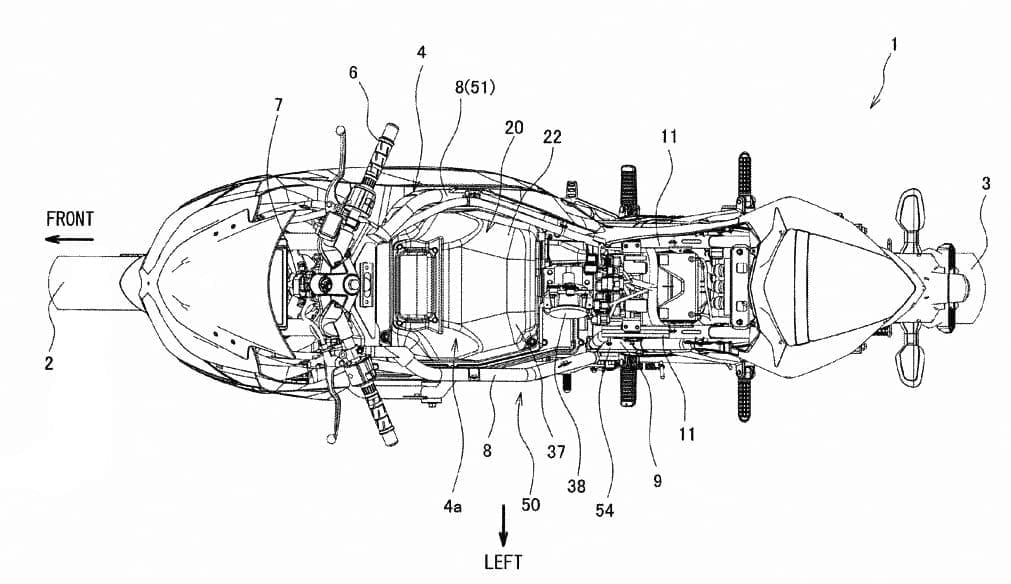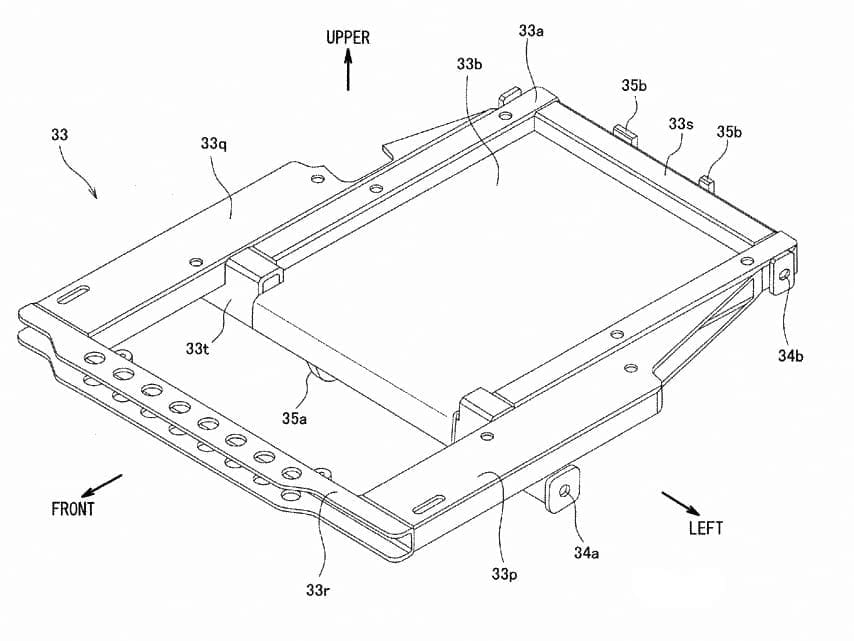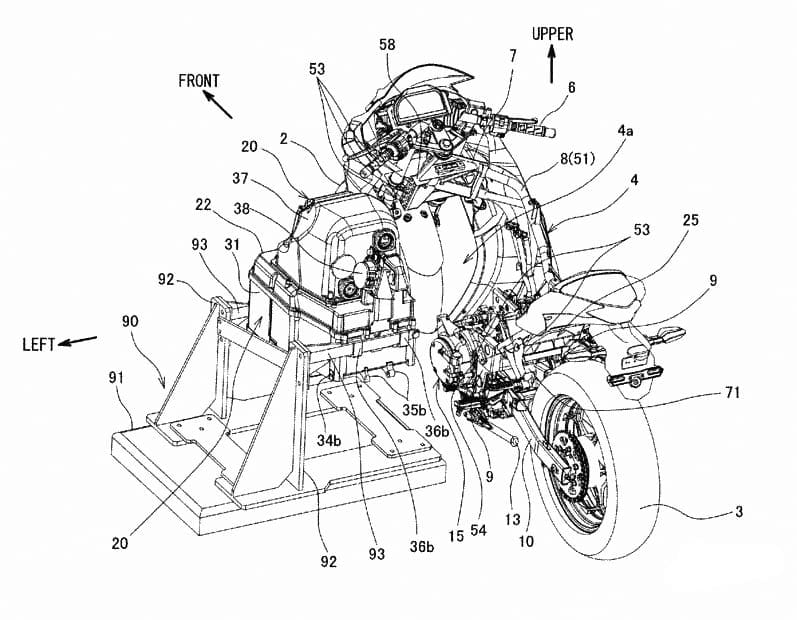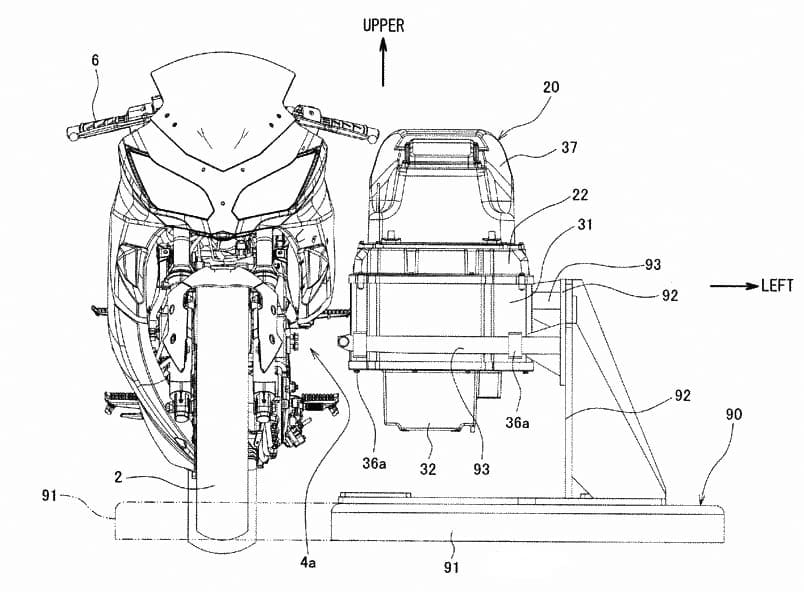What do you think to this Kawasaki BATTERY-POWERED Ninja 400 that hinges the ‘engine’ unit out of the left side of the machine in one smooth movement? The patent’s from a couple of years ago – but we thought we’d remind you about this seriously clever concept, in light of the widespread uptake of electric tech across the bike industry.
The jaw-dropping idea, outlined in official FACTORY patent drawings, shows how the entire power unit can be opened up from the bike itself and replaced with a fully-charged unit, or have maintenance carried out as needed.
The drawings show crucial parts of the design in order to make this work. Previously thought to be an idea destined for the ZX-10R superbike, it is now clear – after Kawasaki revealed its 2018 Ninja 400 model – that the plans stem around the smaller capacity sport roadster and have actually been in the works since before the Ninja 300 was released.
That hinge is figured in most of the drawings for this new motorcycle, you can clearly see how the frame will hinge around this point in the drawing below – the hinge element is number 82 (52,53) on the drawing (top left shoulder of the bike) which shows how the whole left hand side of the frame will open up and allow the entire motor to exit the motorcycle without the need for tricky loading or unloading from the frame. Below the design we’ve put a photo of the 2018 Ninja 400 so that you can directly compare the two bikes.
From the top-view drawing (below) it’s clear that the overall dimensions of the bike will remain the same, what is clear that the electric lump in the middle, which will carry a stack of batteries, is a self-contained unit feeding into the gearbox and conventional chain drive.
The next picture in the run of patents describes the all-important, very strong, battery tray. This sits at the bottom of item numbered 32 in the side-on image of the full bike and carries most of the pivotal weight of the battery unit as it swings out of the engine area.
Another drawing shows the frame in isolation with the hinge system clearly visible (this is the upper noted 52(53), there is a clear, strengthened shoulder to the frame with an outer brace of tubing just to the right of the hinge, and another below the hinge, in order to support the weight of the battery packs. The lower noted 52(53) and 54 shows how the frame is attached to the outer lower part of the bottom of the frame – this is to allow the entire frame to hinge out and back into place where it is secured again before the bike can be ridden.
Those outer braces are also described in the following image, which is the front of the frame shown facing out of the page, the part of the frame’s shoulders (and the frame) which moves is on the right hand side of the image – items 67,8,66 and 51 point to the moving part of the frame.
This image below is the completed idea sited in position with the battery component elements hinged out of the bike and on to a stand that sits alongside the bike. This means that the bike will effectively park next to the stand and the battery compartment would be hinged out for replacement with a full-charged unit, seriously cutting down – or possibly even negating – the need for time spent waiting for the bike to be recharged at all. Like filling up a motorcycle now with petrol, this could lead to a series of already-charged battery stores in special ‘charging stations’ where a rider can just pull up and within a couple of minutes have a new, fully-charged power unit fitted into their bike.
Another image shows this but from the front perspective and without any connecting leads in place. This image is used to show proportion of the battery engine unit in comparison to the overall motorcycle – what’s important to notice here is that with the motor out of the bike there is nothing engine or chassis-wise visible on the right hand of side of the motorcycle from the front.
What is also intriguing in the above drawing is element 91 which is an extension of the frame’s base which holds the batteries out of the bike. The extension is there to effectively catch and support the bike’s front wheel – like a moving choc block that is ready to catch the front wheel initially and once the new battery is in the bike and the rider is back on the bike it will slide back into the base to allow the bike to be ridden away – if the system is used outside and the bike needs to be in the right position for an automatic engine-battery-swap. What that could mean is that what we’re looking at here is essentially the fuel-pump-for-the future where you ride into the choc and leave the bike upright as a machine automatically swaps the battery unit for a fully charged one.

